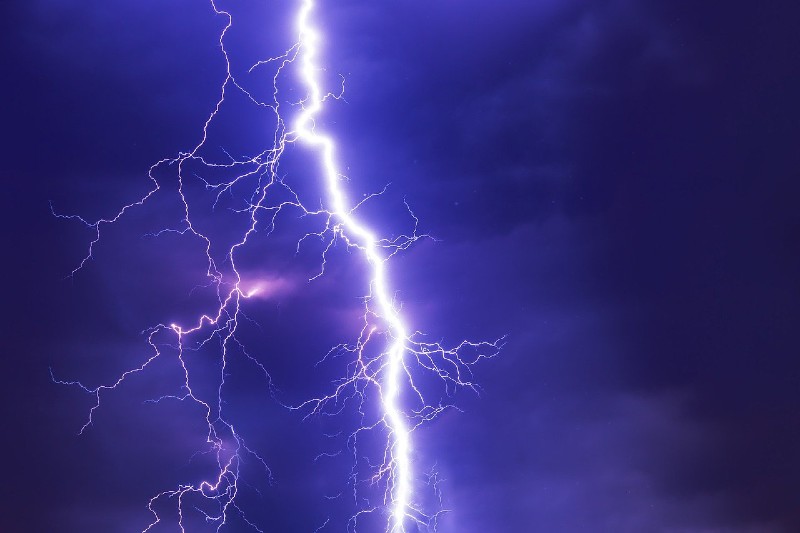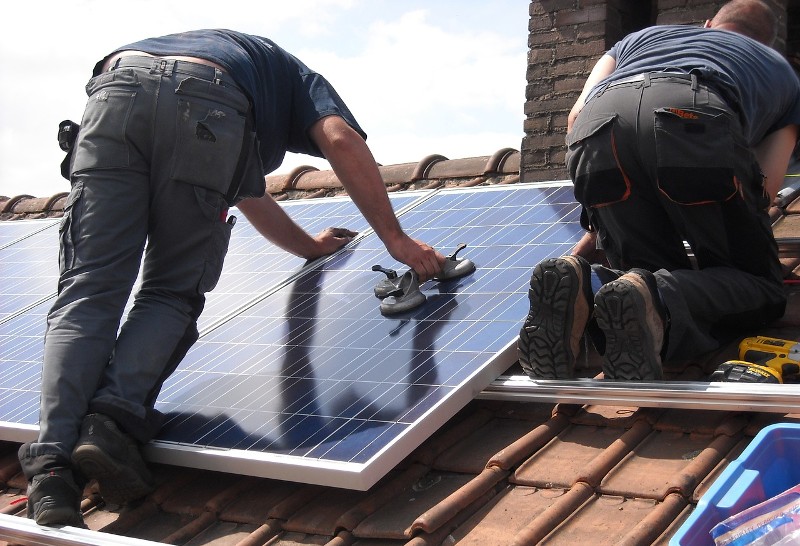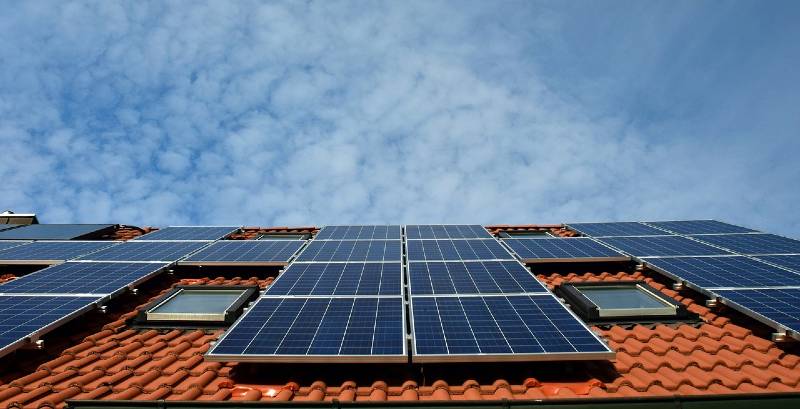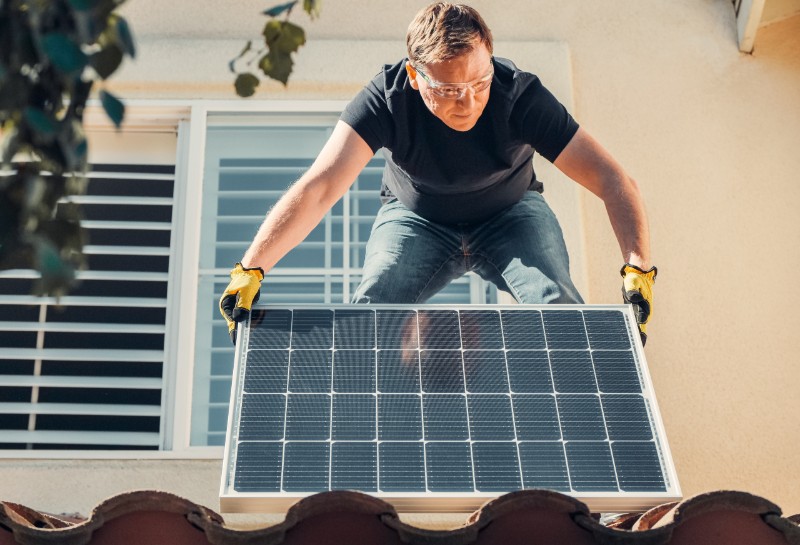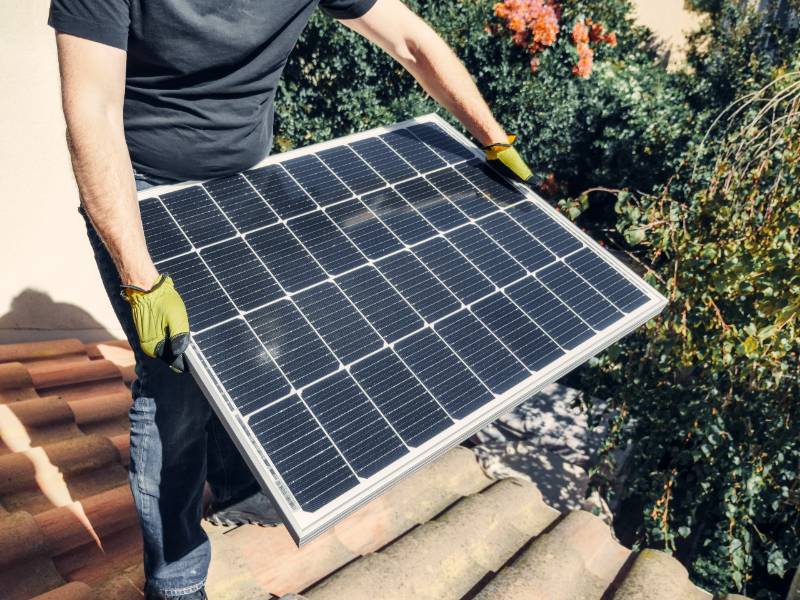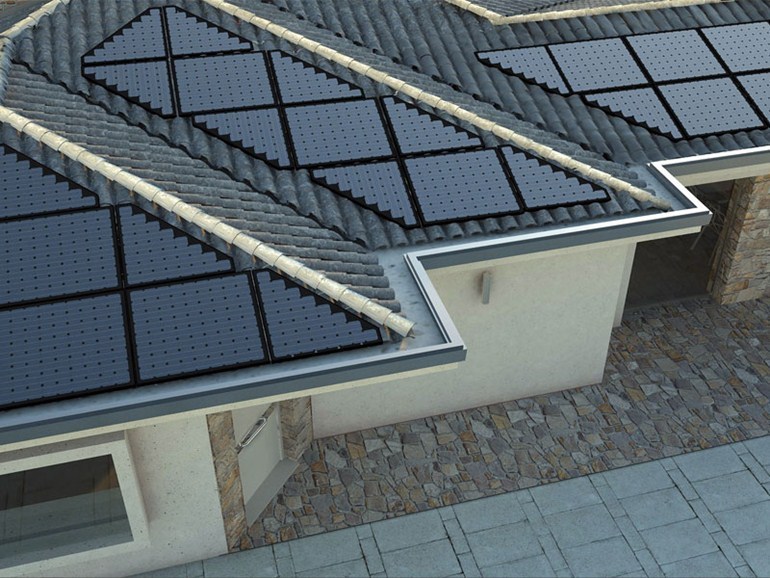With rising electricity costs, homeowners constantly look for ways to cut bills and save money.
Solar panels present an attractive opportunity for savings, but can they power energy-intensive appliances like washing machines?
The simple answer is yes. Solar panels can generate sufficient power to run a washing machine and other home appliances.
In this article, I’ll show you how to calculate and optimize your solar system to power your washing machine efficiently and provide tips for using solar energy in your laundry routine.
Key Takeaways
- To power a washing machine with solar energy, calculate its energy consumption in watts per cycle, then multiply it by your usage frequency.
- Assess the peak sun hours in your area to estimate how much energy your solar panels can generate to size your system appropriately.
- Divide the washing machine’s monthly energy consumption by your area’s monthly peak sun hours to determine the minimum solar system size needed.
- Include potential system losses due to inefficiencies, which can increase the total solar capacity required to power your washing machine reliably.
- Select energy-efficient washing machines and eco-friendly detergents to reduce power usage.
- Implement smart laundry practices like scheduling, soaking clothes, and minimizing rinse cycles to save energy.
How Many Solar Panels Do I Need to Run a Washing Machine?
1. Calculate Your Washing Machine Energy Consumption
Before we dive into the answer, let’s first look at the energy consumption of a washing machine.
Knowing this is essential for properly sizing your solar panel system and figuring out how many panels you need to power your appliance.
You can calculate your washing machine’s energy consumption by looking at its wattage rating and the number of cycles it runs.
Most washing machines have average cycle run times of about 30 minutes, consuming around 500 watts per hour.
So, for each cycle, you can expect your washing machine to use about 250 watts.
Say you use a washing machine 3 times a week, so that’s a total of 750 watts per week or 3,000 watts per month.
For our example, we’ll use 3,000 watts or 3 kWh per month as the washing machine’s energy consumption.
2. Find out Your Peak Sun Hours
Solar panels’ energy production varies depending on the amount of available sunlight and your geographical location.
Sometimes the solar irradiance is as low as 300W/m², while other times it can be as high as 1,000W/m² per hour.
So, we use something called “peak sun hours” to be able to expect the solar panel’s energy production more accurately.
Peak sun hours indicate how many hours per day when the solar irradiance is 1,000W/m² per hour.
For instance, if your region receives 5 peak sun hours per day, that means the solar panel can produce about 5 kWh of energy per day.
Without getting into much detail, you can estimate the peak sun hours in your area using the NREL PVWatts Calculator.
I live in California, so for my location, I get 5.83 peak sun hours per day, on average.
This translates to about 175 hours per month.
3. Calculate Your Theoretical Solar System Size
Now, we have all the necessary information to figure out roughly how many solar panels we need to power our washing machine.
To do this, we need to divide the washing machine’s monthly energy consumption (3 kWh) by the number of peak sun hours (175 hours):
The Solar System Size (kW) = Electricity Usage (kWh) / Peak Sun Hours per Month (hrs)
Solar System Size (kW) = 3 kWh / 175 hrs = 0.017 kW
So, the theoretical size for our solar system to power the washing machine is around 0.017 kW or 17 watts.
However, this is just theoretical and does not take into account efficiency losses from the solar panel’s age, shade, or dust.
4. Factor in Solar System Losses
Any solar system will suffer from losses due to thermal, electrical, and wiring inefficiencies, system age, and shading.
These factors will reduce the solar system’s energy production by about 14%.
So, if we take into account these losses, then the solar system size would be:
Real Life Solar System Size (kW) = Theoretical Solar System Size (kW) x 1.14
Real Life Solar System Size (kW) = 0.017 kW x 1.14 = 0.019 kW
Therefore, the real-life size for our solar system to power the washing machine is about 0.019 kW or 19 watts.
5. Calculate the Number of Solar Panels
Solar panels are rated by their wattage output.
The most common solar panel wattage ratings are between 250W to 400W.
This solar panel wattage rating is the amount of energy it can produce in an hour every peak sun hour.
For instance, a 300W solar panel can produce about 300Wh for every 1,000W/m² of solar irradiance.
For this example, we’ll use a 300W solar panel.
To figure out how many panels you need, divide the real-life solar system size by the wattage of the panel:
Number of Solar Panels (units) = Real Life System Size (kW) / Wattage of Panel(W)
The Number of Solar Panels (units) = 0.019 kW / 300 W = 0.06 units
Since we can’t have a fraction of a solar panel, we need to round up the number to 1 unit.
And as you can see, only one 300W solar panel is more than enough to power your washing machine.
What Affects Washing Machine Solar Power Consumption?
1. Load Size
Overloading your washing machine can increase its demand for electricity from the solar system.
This is because the motor needs to work harder to spin the clothes, resulting in higher electricity usage.
You can find the ideal load size in your washing machine’s manual.
In general, a top-load machine can take up to 12-15 pounds, and a front-load machine up to 18.
I have an extra-large front-load machine, which can take up to a full 22 pounds of clothing.
And despite that, I never put more than 19 pounds of clothing in it to ensure I don’t draw too much electricity from the solar system.
2. Capacity
Modern washing machines come with a variety of capacity options.
This refers to the size of the drum, it varies depending on the model and type of washer you have.
For example, compact washers have a capacity of 2.30 to 2.45 cubic feet, while the more efficient top-load washers range from 3.1 to 4.0 cubic feet.
The thing here is the more capacity, the more electricity your washing machine will need to operate.
But this problem was experienced more among older washers.
A large motor was needed to spin the heavier loads.
Thankfully, modern washing machines come with more efficient motors and don’t require as much electricity.
My washing machine has a capacity of 4.5 cubic feet and I can run it without putting too much strain on my solar system.
3. Temperature Settings
The temperature setting of the washing machine can also affect its solar power consumption.
In general, warm water settings require more electricity than cold water settings.
This is because the washing machine needs to heat the water before it starts working.
As a result, it will put more strain on the solar system.
I know how tempting it is to use hot water for tough stains, but remember we’re trying to reduce our carbon footprint here.
Instead, use a detergent that is specifically designed to tackle tough stains in cold water settings.
This way you’ll save energy and still get the same cleaning action.
Do Portable Washing Machines Use a Lot of Electricity?
Portable washing machines don’t use a lot of electricity.
They’re much smaller and lighter than traditional washing machines, so they don’t require as much power to operate.
Plus, portable washers are used for smaller loads of laundry, which means that their power consumption is much lower than that of a full-size washing machine.
Typically, regular washing machines’ power rating ranges from 400 to 1,400 watts, while portable washing machines can use anywhere between 300 to 700 watts.
But, portable washing machines are best suited for small apartments or RVs and are not ideal for large-scale households.
So, if you need to power a full-size washing machine with solar energy, then stick with the regular ones.
Front vs. Top-Load: Which is More Efficient for Solar Power?
Front-load washing machines use 45% less energy than top-load ones, making them more efficient for solar applications.
They are more expensive than top-load machines, but if your only concern is saving energy, then go for the front-load one.
But why?
It all has to do with physics.
Front-load machines use gravity to help the drum move, which means less electricity is required from the solar system.
On the other hand, top-load machines require more power because they need an agitator to move the clothes around in the drum.
Front-load washers also use less water compared to their top-load counterparts.
And since water is heated in the process, it means that you’ll be using less electricity as well.
So, if you’re trying to reduce your electricity bill and conserve energy, then opt for a front-load washing machine.
But if you’re on a budget and don’t have much to spare, then you can go for the top-load one.
How to Save Energy While Running Your Washing Machine on Solar Energy?
1. Invest in an Energy-Efficient Machine
Of course, the first step in saving energy while running your washing machine on solar power is to invest in an energy-efficient model.
Look for a washer that has a high Energy Star rating or just go for front-loading models.
This way, you’ll be able to reduce your electricity consumption and save more energy in the long run.
2. Stick to a Laundry Schedule
Pushing all your dirty clothes at the weekend and then washing them all in one go is not a good idea.
To give you an example, imagine not finishing your tasks at work and then trying to catch up on the weekend.
You’d be overwhelmed and exhausted, right?
But what if you just spread those tasks throughout the week?
Well, that’s how you should approach laundry too.
Instead of waiting for the pile to reach a mountain-like size, just stick to washing two or three loads per week.
This way, your solar system won’t be overloaded and you can finish all your chores much faster.
3. Use an Eco-Friendly Detergent
Nowadays, many detergents are specifically designed to reduce energy consumption.
These eco-friendly detergents produce fewer suds, meaning the motor won’t have to work as hard to rinse your clothes.
Plus, these detergents often come in a concentrated form, so you’ll be using less product and saving money in the process.
This is a win-win situation for everyone.
4. Soak Your Clothes Before Washing Them
Stained clothes with an ice cream stain or mud-like dirt will require a lot of time to clean, resulting in more energy consumption.
But if you soak your clothes in lukewarm water for about one hour before washing them, it will help weaken and dissolve dirt.
So, when you put them in the washing machine, the stains will be easier to remove and your machine won’t have to use too much energy.
I usually let my clothes soak overnight and then just put them in the washer the next day.
This not only saves energy, but it also keeps my clothes looking like new.
5. Reduce Rinse Cycles
The more rinse cycles you do, the more energy the washing machine will consume.
Generally, the first rinse cycle works on removing most dirt, while the other ones just help eliminate the leftover suds.
So, two rinse cycles should be enough to get your clothes clean.
If you feel like the clothes are still a bit soapy, then just add an extra rinse cycle.
But if not, then stick to the two and save some energy in the process.
I never do more than two rinse cycles and my clothes always come out nice and clean.
6. Ensure to Switch off and Unplug Your Washer
After the machine finishes the cycle, it remains in standby mode.
Although it looks like the machine is turned off, appliances still consume electricity in this state.
The energy consumed is small, but it adds up.
This is why you should always switch off the machine completely and unplug it from the power source.
Switching off your washing machine also saves you the hazards of electric shocks and potential fires due to power surges.
FAQs
Can a Solar System Run a Washing Machine?
A solar system can run a washing machine. However, the size of your solar system will depend on the amount of energy necessary to power the machine.
Can I Use the Washing Machine on Solar Inverter?
You can use your washing machine on a solar inverter. The inverter will convert the electricity produced by your solar panels into AC power, which can be used to run a washing machine.
How Many Watts Does a Solar Washing Machine Use?
Solar machines use around 400-1,400 watts of energy, depending on the type and size of the machine. The best way to find out exactly how much your washing machine uses is to check its label or read the user manual.
What Is the Best Washing Machine for Solar Power?
The best washing machine for solar power is the front-loading machine. Front-loading machines are more efficient than top-loaders and use less energy, making them ideal for solar power systems.
Conclusion
As promised, we’ve covered how to calculate the energy needs of your washing machine and size your solar panel system accordingly.
We also offered tips on choosing energy-efficient appliances and adopting smarter laundry habits to maximize your solar power usage.
But here’s a thing: while it’s key to focus on the big picture of solar energy, don’t overlook the small, daily actions that accumulate significant savings over time.
For instance, using a clothesline on sunny days instead of a dryer, or washing full loads to avoid wasting water and energy.
Do you still have questions?
If you still have any questions, feel free to ask them in the comments section below.

